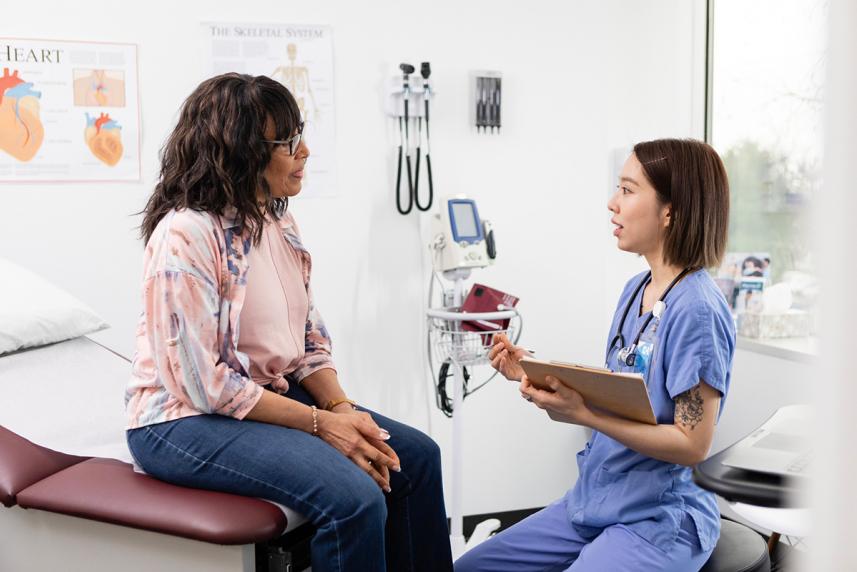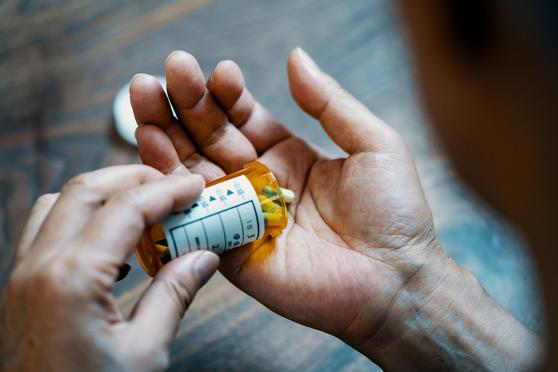Living well with chronic kidney disease
A chronic kidney disease diagnosis can feel overwhelming, but understanding the condition and your next steps can make a big difference. Here's how to take charge of your kidney health.

Learning you have chronic kidney disease (CKD) may come as a surprise, and getting used to your new normal can take some time. One thing that can help? Learning as much as you can about your condition and what steps you can take next. Here’s what you need to know.
What is chronic kidney disease and what causes it?
A CKD diagnosis means that your kidneys are not filtering wastes from your blood as they should. When the condition progresses, you can start to feel sick. But how does it happen?
CKD doesn’t originate in the kidneys. Instead, it’s caused by damage that results from other conditions. In fact, about two-thirds of CKD cases are caused by diabetes or high blood pressure. Here’s how: High blood sugar (a main component of diabetes) and high blood pressure can both damage blood vessels that help the kidneys filter your blood.
Other causes of CKD include the following:
- Glomerulonephritis (a group of diseases that cause inflammation and disrupt the kidney’s filtering units)
- Inherited diseases, such as polycystic kidney disease
- Kidney and urinary tract abnormalities before birth
- Autoimmune diseases, such as lupus nephritis
- Obstructions caused by kidney stones or tumors
- Infections caused by an enlarged prostate
Who gets chronic kidney disease?
CKD can affect anyone, but certain populations have an increased risk. For example, according to the American Kidney Fund, over one-third of kidney failure patients living in the United States are African American. And Native Americans are twice as likely to experience kidney failure as white Americans.
According to the Centers for Disease Control and Prevention, more than 1 in 7 adults in the United States are living with CKD. That’s more than 37 million people.
How is CKD detected and diagnosed?
Early detection and early treatment of chronic kidney disease can slow or halt its progression. Having an annual physical exam and/or annual wellness exam gives your doctor a chance to review your bloodwork to see if there are any signs of kidney decline. It is especially important to see a doctor regularly if you have borderline hypertension, prediabetes, diabetes, or a family history of CKD — or if you belong to a group that has a higher risk.
Chronic kidney disease is often hard to detect, but symptoms include the following:
- Feeling tired
- Having trouble focusing
- Having a poor appetite
- Experiencing muscle cramps at night
- Having puffy eyes when you wake up
- Having dry, itchy skin
- Having swollen ankles and feet
- Needing to urinate more often, especially during the night
To diagnose CKD, your doctor will perform tests that will provide a definitive answer. One of these tests is a urine albumin-creatinine ratio (uACR) test. (The protein albumin in urine can indicate kidney problems.)
Your doctor may also do a blood test for creatinine to help with a diagnosis. (Creatinine is a waste product made by the muscles during daily activity. Too much of it in the blood is another sign of kidney disease.)
Another way doctors monitor CKD is by taking a measurement of your estimated glomerular filtration rate (eGFR). This is a blood test that tells them how well the kidneys are filtering.
What are the stages of chronic kidney disease?
Here’s an overview of what’s happening during each stage of CKD, according to the American Kidney Fund:
- Stage 1: The kidneys are mildly damaged, but working as they should.
- Stage 2: The kidneys are mildly damaged. They’re working well, though not optimally.
- Stage 3: The damage to the kidneys can range from mild to severe. They’re no longer working as well as they should be.
- Stage 4: The kidneys are severely damaged and are close to no longer working.
- Stage 5: This is the most severe stage. The kidneys are either no longer working or near failure.
As many as 9 out of 10 people who have chronic kidney disease don’t know they have it. And often there are no symptoms when the disease is in its early stages (stages 1 through 3), so it can easily go undetected.
Once chronic kidney disease is more advanced (stage 5), it’s called end-stage kidney disease (ESKD), or end-stage renal disease (ESRD). At this stage, the kidneys have stopped functioning properly. Patients with ESKD/ESRD need regular dialysis to filter toxins from their blood.
At this stage, patients are often on a waiting list for a kidney transplant, which is managed by the United Network for Organ Sharing, an organization that ensures the fair distribution of donor organs.
How is chronic kidney disease treated?
For patients with CKD, several types of treatments are available. They include the following:
Stages 1 through 3:
- Having regular checkups with your doctor and being tested
- Taking medications as prescribed
- Increasing physical activity (such as walking) to promote blood flow throughout the body, which improves kidney function
- Maintaining a kidney-friendly diet
Stage 4:
- Seeing your doctor regularly
- Taking medications, such as ACE inhibitors, diabetes medications, supplements, diuretics, or iron supplements, to address symptoms that have progressed
Stage 5:
- Dialysis, to remove waste and excess fluid from your kidneys when they no longer work properly
- Kidney transplant
Bottom line: Everyone on your care team is here to help. So, whether you’re dealing with chronic kidney disease or ESKD/ESRD, your provider can connect you with specialists such as social workers, dietitians, pharmacists, and care coordinators. The specific plan will depend on your long-term and immediate needs.


